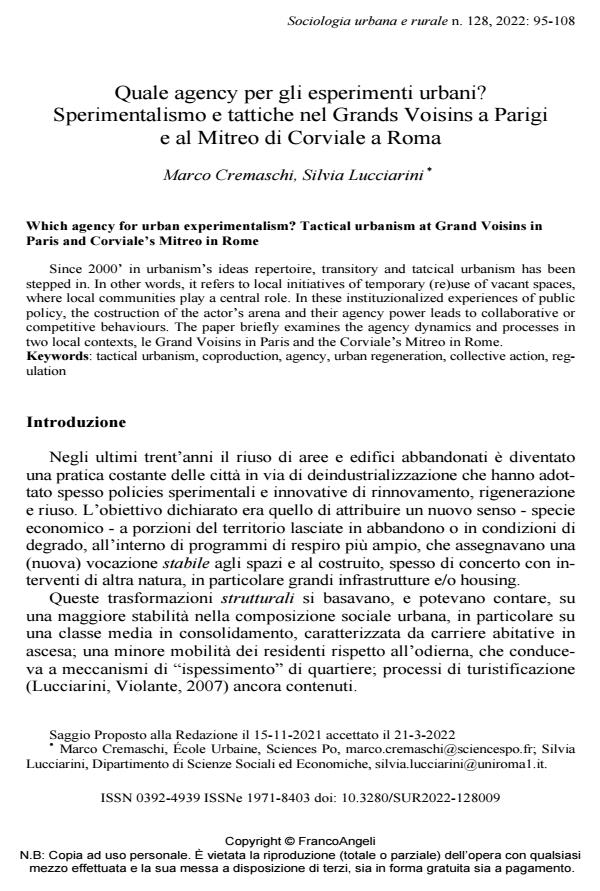Which agency for urban experimentalism? Tactical urbanism at Grand Voisins in Paris and Corviale’s Mitreo in Rome
Journal title SOCIOLOGIA URBANA E RURALE
Author/s Marco Cremaschi, Silvia Lucciarini
Publishing Year 2022 Issue 2022/128
Language Italian Pages 14 P. 95-108 File size 174 KB
DOI 10.3280/SUR2022-128009
DOI is like a bar code for intellectual property: to have more infomation
click here
Below, you can see the article first page
If you want to buy this article in PDF format, you can do it, following the instructions to buy download credits

FrancoAngeli is member of Publishers International Linking Association, Inc (PILA), a not-for-profit association which run the CrossRef service enabling links to and from online scholarly content.
Since 2000’ in urbanism’s ideas repertoire, transitory and tatcical urbanism has been stepped in. In other words, it refers to local initiatives of temporary (re)use of vacant spaces, where local communities play a central role. In these instituzionalized experiences of public policy, the costruction of the actor’s arena and their agency power leads to collaborative or competitive behaviours. The paper briefly examines the agency dynamics and processes in two local contexts, le Grand Voisins in Paris and the Corviale’s Mitreo in Rome.
Keywords: tactical urbanism, coproduction, agency, urban regeneration, collective action, regulation
- Eventually detached, eventually belonging. A residential narratives' based institutionalist perspective on urban regeneration and the middle classes in Milan and Marseille Alessandro Coppola, Silvia Lucciarini, in Cities 104052/2023 pp.104052
DOI: 10.1016/j.cities.2022.104052 - Tactical Urbanism Interventions for the Urban Environment: Which Economic Impacts? Marco Rossitti, Alessandra Oppio, Francesca Torrieri, Marta Dell’Ovo, in Land /2023 pp.1457
DOI: 10.3390/land12071457
Marco Cremaschi, Silvia Lucciarini, Quale agency per gli esperimenti urbani? Sperimentalismo e tattiche nel Grands Voisins a Parigi e al Mitreo di Corviale a Roma in "SOCIOLOGIA URBANA E RURALE" 128/2022, pp 95-108, DOI: 10.3280/SUR2022-128009